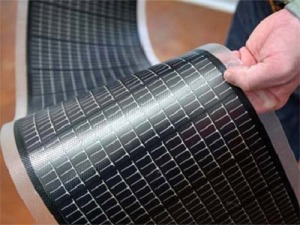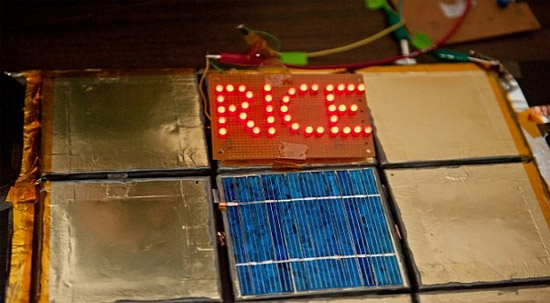Despite a tough market leading to widespread cost reductions and negative returns for many operators in the photovoltaic sector in 2012, solar technology nonetheless took major strides and achieved a number of landmark breakthroughs in key research areas.
In materials research, the North Carolina State University (NCSU) in Raleigh, North Carolina used cutting-edge nanotechnology to develop slimmer and more affordable solar cells.
The cells are comprised of sandwiched nanostructures which not only cut down on material usage and expenditures but also improve solar absorption and raise conversion efficiency.
As an added bonus, the manufacturing processes for the new technology are compatible with techniques currently employed throughout the industry for the production of thin-film solar cells.
In terms of government-funded initiatives, the National Renewable Energy Laboratory(NREL), a research arm of the US Department of Energy, teamed up with Natcore Technology to create the most absorbent solar cell ever devised, capable of capturing some 99.7 per cent of available sunlight.
The new technology resulting from this collaborative effort between the government and private sectors could reduce the cost of solar cells by around two to three per cent while lifting energy output by up to 10 per cent. The black silicon used for the cells is also far cheaper than standard anti-reflection technologies.
 A key area of research for 2012 was improved storage techniques for renewable energies, with scientists from Houston’s Rice University in Texas developing a remarkable “paintable” battery which can be applied to any tractable surface. The rechargeable battery opens a new vista of possibilities for the convenient storage of solar energy.
A key area of research for 2012 was improved storage techniques for renewable energies, with scientists from Houston’s Rice University in Texas developing a remarkable “paintable” battery which can be applied to any tractable surface. The rechargeable battery opens a new vista of possibilities for the convenient storage of solar energy.In the field of flexible thin-film cells, a joint undertaking between scientists from Canada and Saudi Arabia smashed the world record for solar efficiency, surpassing the ousted place holder by a staggering 37 per cent. The colloidal quantum dot (CQD) thin-film solar cell, developed by scientists from Canada’sUniversity of Toronto and the King Abdullah University of Science & Technology in Saudi Arabia, achieved a world-record efficiency level of seven per cent via the application of a “hybrid passivation scheme.”
The new technology could potentially be applied to the cheap, mass manufacture of thin-film solar cells by using flexible substrates to “print” the devices in a process akin to that traditionally employed for the production of newspapers.

source:http://genesisnanotech.wordpress.com
No comments:
Post a Comment